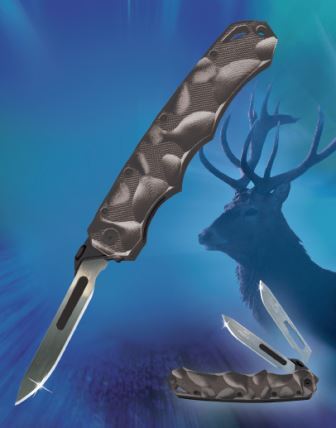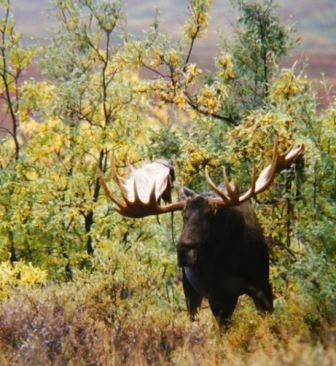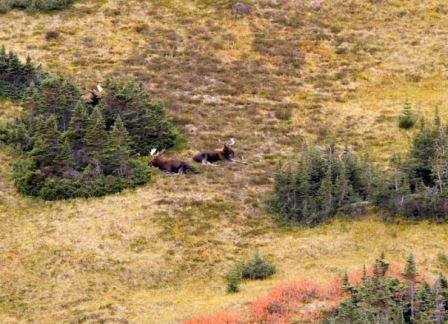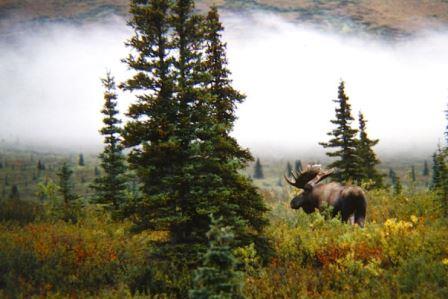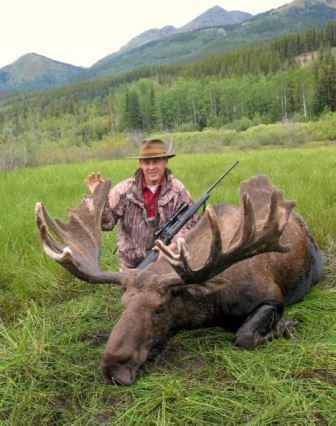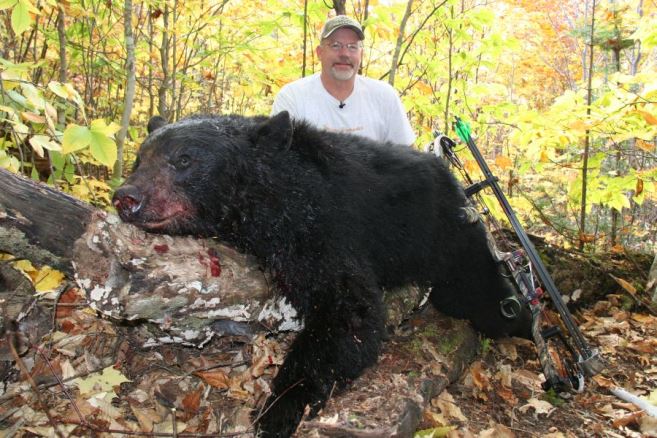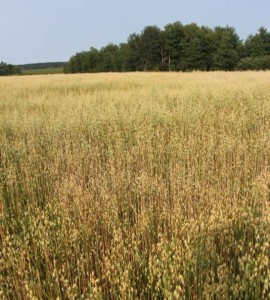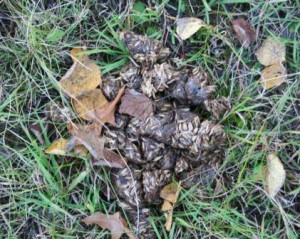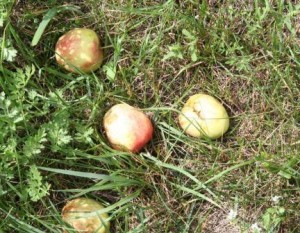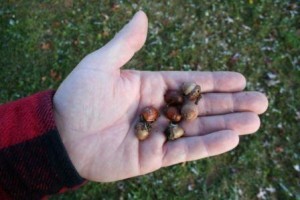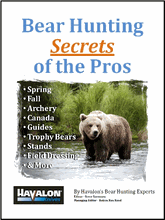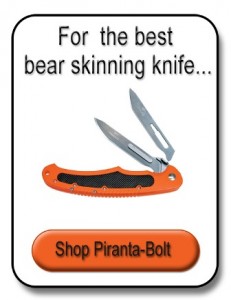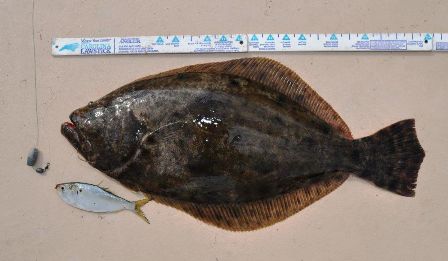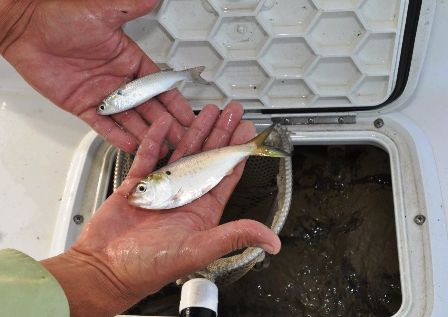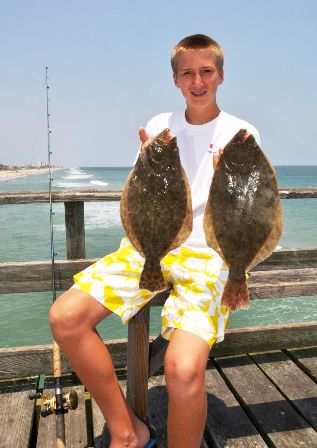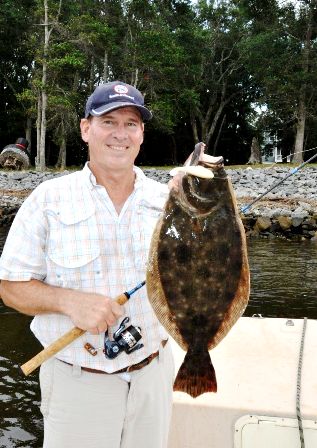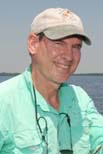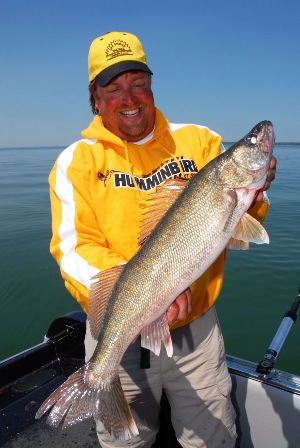By Ron Spomer
A bullet is not just a bullet.
Expert advice on 8 different bullet types,
plus how to pick the right one!
We hunters place way too much value on our rifles and scopes and way too little on our actual bullets. We’ll spend $1,000 on a hunting rifle, $500 on a scope (should be the other way around) and then look for the cheapest box of ammo we can find. Well, big mistake.
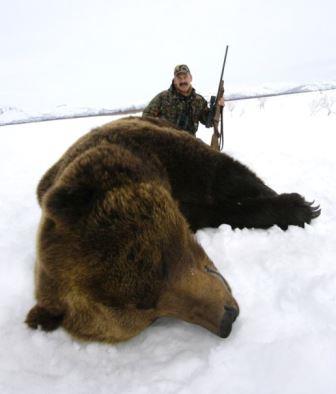
You don’t want your bullet to fail when facing an animal of this size – especially one that can fight back. This brown bear dropped in its tracks to a high shoulder shot from a .375 H&H Dakota M97 rifle firing Remington’s 300-grain Swift A-Frame Premium bullet. (Photo: Ron Spomer)
No offense, folks, but it’s the bullet that’s doing all the work. Everything else is just a launch pad. Give me a $100 used single-shot with open sights and I’ll collect the world’s record elk, moose, whitetail, pronghorn … unless you also give me some lousy ammunition.
Yes, bullets can fail. A bullet that’s too soft can flatten out like a pancake and never reach the vitals, while a bullet that’s too hard can fail to expand and zip right through the vitals like a target arrow, doing minimal damage. Get one that’s too fragile and it can break into tiny pieces and create nothing more than a flesh wound. A bullet that’s poorly balanced can wobble so badly that it arrives at a destination other than the one you were aiming at.
This is why the marketplace is flooded with, oh, about 397 different types of bullets. Sorting through them all can be tricky, but don’t worry. Here’s how to pick the right one for the job you’re looking to accomplish:
- Select your quarry. Obviously, you don’t need an elephant solid for a woodchuck. Neither do you want a frangible varmint bullet for an elk. The bigger the animal, the “tougher” or “harder” the bullet should be.
- Select your velocity. There’s a big difference between impact velocities of a 150-grain bullet launched from a 30-30 Winchester versus a 300 Winchester Magnum. The higher the impact velocity, the tougher a bullet must be in order to stay in one piece and not flatten like a hammered gumdrop.
- Select your impact distance. This one catches some shooters by surprise. Don’t assume your bullet is going to land with magnum velocities just because you launch it at magnum velocities. Somewhere downrange every bullet slows to 30-30 Winchester speeds – and then even slower. This doesn’t mean they’re likely to bounce off a mule deer’s shoulder, but at long range (and we’re talking beyond 500 yards in most cases) expansion may be minimal.
Bullet Types – How to Tell Them Apart and Judge What They’ll Do
- Frangible varmint bullets. These usually have thin, gilding metal jackets (copper alloyed with 5% to 10% zinc) and are filled with pure lead. The jacket prevents the lead from melting at high velocities in the bore, but on impact the somewhat brittle gilding metal usually breaks into two or more pieces. The lead may flatten or also break up, none of which matters on a varmint the size of a coyote or smaller. Varmint bullets are not recommended for big game hunting, but can be used effectively if they are slipped behind the shoulder to “explode” in the heart/lungs. I’ve seen whitetails terminated almost immediately with such shots. But if you hit a bone or major muscle … it’s a nasty flesh wound. (Examples: Sierra and Speer varmint hollow points, Nosler Ballistic Tip Varmint, etc.)
- Traditional cup-and-core bullets. Much like varmint bullets except the gilding metal is usually thicker and the lead is sometimes hardened with a bit of antimony. Jackets can part from cores under impact. (Examples: Remington Core-Lokt, Winchester Power Point, Hornady SST.)
- Bonded. The lead core (usually pure lead) is molecularly bonded with the jacket so the two cannot mechanically separate. Usually results in increased penetration because weight retention remains fairly high. Lead, however, is still lost to erosion against meat and muscle. (Examples: Accubond, Scirocco, Power Max Bonded, Fusion.)
- Monolithic. All one material, usually copper or a copper alloy. Expansion is initiated via a hollow punched into the nose. The depth and width of this hollow determines the degree of expansion. (The classic example – Barnes X.)
- Partition style. The lead shank is usually isolated from the tapered lead nose by a wall of jacket material between the two. (Examples: Nosler Partition is the original, Swift A-Frame is a beefier version.)
- Hybrids. Any combination of the above. (Examples: Solid copper shank and bonded lead nose – Federal Bear Claw and Bonded Tip; Lead core shank and hollow copper – Winchester XP3.)
- Non-leaded varmint. Thin gilding metal jacket and sintered (compressed) metal core instead of lead.
- Solids. Non-expanding. These can be solid copper or gilding metal or a lead core completely surrounded by jacket material. Designed to NOT expand, but penetrate deeply in a straight line, thus flat-nosed, sometimes round-nosed.
Any of these bullets can have flat or boat-tailed bases, exposed lead tips, tapered jackets, thick or thin jacket bases, polycarbonate tips or other features that change performance minimally.
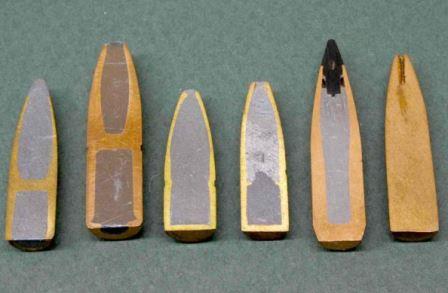
Materials, design and construction all influence bullet performance. From left: Nosler Partition, Swift A-Frame, Remington Core-Lokt, Speer Grand Slam, Swift Scirocco, Barnes X. (Photo: Ron Spomer)
Terminal Performance: Two Schools of Thought
As the hunter, you must determine which type of bullet is best suited for your rifle, game and style of hunting. For this, there are two basic schools of thought. One camp holds that bullets should stay inside the animal to dump all their energy into vital tissue. The other prefers that bullets expand to damage tissue, but pass out like a good broadhead arrow to leave a better blood trail. After observing literally hundreds of big game animals, from 40-pound African antelopes to brown bears and moose shot with everything from .223 Remington to .458 Lott, I’m firmly in the shoot-through camp. Kinetic energy carried by bullets doesn’t reliably behave like a knockout punch, so I like to have a good blood trail.
Here follows a basic summary of which bullet types to use and where, but numerous variables can always change things. Consider them all, but also consider accuracy. It’s better to use a slightly less preferred bullet that is accurate in your rifle than an inaccurate one that might have a slight edge in terminal performance.
The Velocity Factor
For cartridges that launch bullets at about 2,800 fps or less at game the size of whitetails taken broadside at 100 to 250 yards, traditional cup-and-core bullets are quite effective. They generally ball up and stop against the far side hide.
At fast “magnum-class” launch velocities of 3,000 fps and higher, cup-and-core bullets tend to pancake or break up, especially inside of 200 yards. You may be better served by a bonded, partition, monolithic or hybrid bullet. Such bullets will more likely stay in one piece and reach vitals if you have to shoot through the shoulders or quartering from any angle. A deep penetrating bullet can often reach the vitals from north to south to finish fleeing, wounded game. The bigger/bulkier/tougher the game, the deeper penetrating bullet you want.
At extreme ranges, say 500 yards and beyond, the velocity of a bullet drops so much that cup-and-core bullets begin performing well again. “Hard” bullets may not open as widely as they would on game inside of 400 yards, even when shot at over 3,000 fps.

Depending on construction, impact velocity and game struck, bullets perform in different ways. Lead can erode away, jackets can separate from lead cores, bones can mangle and tear. Monolithic bullets like the Barnes TSX (at right) usually stay in one piece, although sometimes a petal or two can shear off. The greater the retained weight of any bullet, the deeper the penetration. (Photo: Ron Spomer)
Regardless of the bullets you use, magic is not a factor. No bullet reliably drops game in its tracks every time at any impact velocity unless you hit the central nervous system. Destroy vital tissues (heart, lungs, liver) and game usually lives for several seconds to a minute until a decrease in blood pressures deprives the brain of oxygen.
The last step in shooting game is observation. Watch carefully after every shot for signs of a hit. Check thoroughly for blood and especially hair. Often bullets enter, cut hair and stay inside while the animal runs 20 to 200 yards without losing a drop of blood. Always remember to be persistent in your search.
About Ron Spomer
Ron is rifles/optics columnist for Sporting Classics and North American Hunter magazines and host of Winchester World of Whitetail on NBC Sports. Learn more at (www.ronspomeroutdoors.com)
Wondering what to do after the kill? Try out the all-new Piranta Black Stag … Now available from Havalon Knives! Click here:
9,280 total views, no views today


